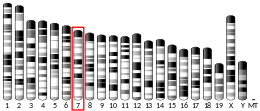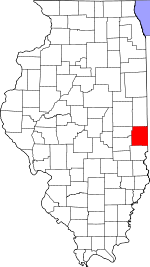KLK7
KLK7| KLK7 | |||||||||||||||||||||||||||||||||||||||||||||||||||
|---|---|---|---|---|---|---|---|---|---|---|---|---|---|---|---|---|---|---|---|---|---|---|---|---|---|---|---|---|---|---|---|---|---|---|---|---|---|---|---|---|---|---|---|---|---|---|---|---|---|---|---|
 | |||||||||||||||||||||||||||||||||||||||||||||||||||
| |||||||||||||||||||||||||||||||||||||||||||||||||||
| 식별자 | |||||||||||||||||||||||||||||||||||||||||||||||||||
| 에일리어스 | KLK7, PRSS6, SCCE, hK7, 칼리크레인관련펩티드가수분해효소7 | ||||||||||||||||||||||||||||||||||||||||||||||||||
| 외부 ID | OMIM: 604438 MGI: 1346336 HomoloGene: 37998 GeneCard: KLK7 | ||||||||||||||||||||||||||||||||||||||||||||||||||
| |||||||||||||||||||||||||||||||||||||||||||||||||||
| |||||||||||||||||||||||||||||||||||||||||||||||||||
| |||||||||||||||||||||||||||||||||||||||||||||||||||
| |||||||||||||||||||||||||||||||||||||||||||||||||||
| |||||||||||||||||||||||||||||||||||||||||||||||||||
| 위키데이터 | |||||||||||||||||||||||||||||||||||||||||||||||||||
| |||||||||||||||||||||||||||||||||||||||||||||||||||
칼리크레인 관련 펩티드가수분해효소 7(KLK7)은 인간에서 KLK7 [5][6][7][8]유전자에 의해 암호화되는 세린단백질가수분해효소이다.KLK7은 초기에 표피에서 정제되었으며 각질 키모트립틱 효소(SCE)[9]로 특징지어졌다.그것은 나중에 19번 염색체에 위치한 15개의 상동 세린 단백질 분해 효소를 포함하는 인간 칼리크레인 계열의 7번째 구성원으로 확인되었다(19q13).[10]
진
KLK7 유전자의 대체 스플라이싱은 동일한 단백질을 [8]코드하는 두 가지 전사 변형을 낳는다.
기능.
KLK7은 표피의 과립층 내에서 불활성 자이모겐으로 분비되며 활성효소를 해방시키기 위해서는 짧은 N말단 프로영역의 단백질 분해분열이 필요하다.이는 KLK7의 [11][12]시험관내 활성제인 KLK5 또는 매트리프타아제에 의해 수행될 수 있다.
일단 활성화되면 KLK7은 데스모콜린과 각막모신을 [13]분해할 수 있다.이러한 단백질은 각질층에 인접한 세포의 중간 필라멘트를 연결하는 세포간 응집 구조인 각막모솜의 세포외 성분을 구성합니다.각막의 단백질 분해는 표피 외층으로부터의 각막세포의 탈락을 위해 필요하다.이는 피부 항상성을 유지하는 데 KLK7의 역할을 나타냅니다.
KLK5와 KLK14 모두 피부발현 단백질 분해효소로서 각막모좀 [13]단백질을 분해한다.KLK5는 KLK7과 KLK14의 활성화와 더불어 자동 활성화가 가능하며, 이는 KLK 스킨 캐스케이드가 [12]박리 조정을 담당함을 시사합니다.
KLK7 활성은 LEKTI,[14][15] SPINK6,[16] 엘라핀[17] 및 알파-2-마크로글로불린 유사 1을 포함한 다수의 내인성 단백질 억제제에 의해 조절된다.[18]Zn2+ 이온과2+ Cu 이온 모두 KLK7을 [17]억제할 수 있습니다.
KLK7은 키모트립신 유사 세린 단백질 분해효소로서 티로신, 페닐알라닌 또는 류신 [19]잔류물의 단백질을 분해하는 것을 선호한다.펩타이드 기질 가수분해 분석 결과 P1에서 [20]티로신이 강하게 선호된다.
임상적 의의
피부병
KLK7의 규제 장애는 아토피,[21][22] 건선[23], 네더톤 [24][25]증후군을 포함한 여러 피부 질환과 관련이 있다.이러한 질병은 피부 항상성의 장애와 올바른 장벽 기능 때문에 피부가 지나치게 건조하고 비늘이 많고 염증이 있는 것이 특징이다.
암
KLK7의 과잉발현은 세포접합단백질의 과도한 분열에 의한 [26]난소암,[27] 유방암, [28][29]췌장암, 자궁경부암 및 흑색종암의[30] 전이를 위한 경로를 제공할 수 있다.그것은 [31]또한 폐암에서 발현되지 않을 수도 있다.
레퍼런스
- ^ a b c GRCh38: 앙상블 릴리즈 89: ENSG00000169035 - 앙상블, 2017년 5월
- ^ a b c GRCm38: 앙상블 릴리즈 89: ENSMUSG000030713 - 앙상블, 2017년 5월
- ^ "Human PubMed Reference:". National Center for Biotechnology Information, U.S. National Library of Medicine.
- ^ "Mouse PubMed Reference:". National Center for Biotechnology Information, U.S. National Library of Medicine.
- ^ Hansson L, Stromqvist M, Backman A, Wallbrandt P, Carlstein A, Egelrud T (Aug 1994). "Cloning, expression, and characterization of stratum corneum chymotryptic enzyme. A skin-specific human serine proteinase". J Biol Chem. 269 (30): 19420–6. doi:10.1016/S0021-9258(17)32185-3. PMID 8034709.
- ^ Lundwall A, Band V, Blaber M, Clements JA, Courty Y, Diamandis EP, Fritz H, Lilja H, Malm J, Maltais LJ, Olsson AY, Petraki C, Scorilas A, Sotiropoulou G, Stenman UH, Stephan C, Talieri M, Yousef GM (Jun 2006). "A comprehensive nomenclature for serine proteases with homology to tissue kallikreins" (PDF). Biol Chem. 387 (6): 637–41. doi:10.1515/BC.2006.082. PMID 16800724. S2CID 436200.
- ^ Diamandis, Eleftherios P.; Deperthes, David; Lundwall, Åke (Jun 2006). "Proceedings of the 1st International Symposium on Kallikreins, Lausanne, Switzerland, September 1-3 , 2005". Biol Chem. 387 (6): 635–824. doi:10.1515/BC.2006.081. PMID 16800723. S2CID 83910246.
- ^ a b "Entrez Gene: KLK7 kallikrein-related peptidase 7".
- ^ Lundstrom A, Egelrud T (1991). "Stratum-Corneum Chymotryptic Enzyme: a Proteinase Which May Be Generally Present in the Stratum-Corneum and with a Possible Involvement in Desquamation". Acta Dermato-Venereologica. 71 (6): 471–474. PMID 1685827.
- ^ Yousef GM, Scorilas A, Magklara A, et al. (2000). "The KLK7 (PRSS6) gene, encoding for the stratum corneum chymotryptic enzyme is a new member of the human kallikrein gene family - genomic characterization, mapping, tissue expression and hormonal regulation". Gene. 254 (1–2): 119–28. doi:10.1016/S0378-1119(00)00280-8. PMID 10974542.
- ^ Katiuchia Uzzun Sales; Andrius Masedunskas; Alexandra L. Bey; Amber Rasmussen; Roberto Weigert; Karin List; Roman Szabo; Paul A. Overbeek; Thomas H. Bugge (2010). "Matriptase initiates epidermal prokallikrein activation and disease onset in a mouse model of Netherton syndrome". Nat. Genet. 42 (8): 676–683. doi:10.1038/ng.629. PMC 3081165. PMID 20657595.
- ^ a b Brattsand, M., Stefansson, K., Lundh, C., Haasum, Y., & Egelrud, T. (2005). "A proteolytic cascade of kallikreins in the stratum corneum". Journal of Investigative Dermatology. 124 (1): 198–203. doi:10.1111/j.0022-202X.2004.23547.x. PMID 15654974.
{{cite journal}}: CS1 maint: 여러 이름: 작성자 목록(링크) - ^ a b Caubet C, Jonca N, Brattsand M, et al. (2004). "Degradation of corneodesmosome proteins by two serine proteases of the kallikrein family, SCTE/KLK5/hK5 and SCCE/KLK7/hK7". J. Invest. Dermatol. 122 (5): 1235–44. doi:10.1111/j.0022-202X.2004.22512.x. PMID 15140227.
- ^ Deraison, C., Bonnart, C., Lopez, F., Besson, C., Robinson, R., Jayakumar, A., Wagberg, F., Brattsand, M., Hachem, J. P., Leonardsson, G., & Hovnanian, A. (2007). "LEKTI fragments specifically inhibit KLK5, KLK7, and KLK14 and control desquamation through a pH-dependent interaction". Molecular Biology of the Cell. 18 (9): 3607–3619. doi:10.1091/mbc.e07-02-0124. PMC 1951746. PMID 17596512.
{{cite journal}}: CS1 maint: 여러 이름: 작성자 목록(링크) - ^ Egelrud T, Brattsand M, Kreutzmann P, Walden M, Vitzithum K, Marx UC, Forssmann WG, Mägert HJ (2005). "hK5 and hK7, two serine proteinases abundant in human skin, are inhibited by LEKTI domain 6". Br J Dermatol. 153 (6): 1200–1203. doi:10.1111/j.1365-2133.2005.06834.x. PMID 16307658. S2CID 42775195.
- ^ Meyer-Hoffert U, Wu Z, Kantyka T, Fischer J, Latendorf T, Hansmann B, Bartels J, He Y, Gläser R, Schröder JM (October 2010). "Isolation of SPINK6 in human skin: selective inhibitor of kallikrein-related peptidases". J Biol Chem. 285 (42): 32174–81. doi:10.1074/jbc.M109.091850. PMC 2952218. PMID 20667819.
- ^ a b Franzke CW, Baici A, Bartels J, Christophers E, Wiedow O (September 1996). "Antileukoprotease inhibits stratum corneum chymotryptic enzyme. Evidence for a regulative function in desquamation". J Biol Chem. 271 (36): 21886–90. doi:10.1074/jbc.271.36.21886. PMID 8702990.
- ^ Galliano MF, Toulza E, Gallinaro H, Jonca N, Ishida-Yamamoto A, Serre G, Guerrin M (November 2005). "A novel protease inhibitor of the alpha2-macroglobulin family expressed in the human epidermis". J Biol Chem. 281 (9): 5780–5789. doi:10.1074/jbc.m508017200. PMID 16298998.
- ^ Skytt A, Strömqvist M, Egelrud T (1995). "Primary substrate specificity of recombinant human stratum corneum chymotryptic enzyme". Biochem. Biophys. Res. Commun. 211 (2): 586–9. doi:10.1006/bbrc.1995.1853. PMID 7794273.
- ^ Debela M, Magdolen V, Schechter N, Valachova M, Lottspeich F, Craik CS, Choe Y, Bode W, Goettig P (2006). "Specificity profiling of seven human tissue kallikreins reveals individual subsite preferences". J Biol Chem. 281 (35): 25678–88. doi:10.1074/jbc.M602372200. PMID 16740631.
- ^ Komatsu N, Saijoh K, Kuk C, Liu AC, Khan S, Shirasaki F, Takehara K, Diamandis EP (Jun 2007). "Human tissue kallikrein expression in the stratum corneum and serum of atopic dermatitis patients". Exp Dermatol. 16 (6): 513–519. doi:10.1111/j.1600-0625.2007.00562.x. PMID 17518992. S2CID 866377.
- ^ Vasilopoulos Y, Cork MJ, Murphy R, et al. (2004). "Genetic association between an AACC insertion in the 3'UTR of the stratum corneum chymotryptic enzyme gene and atopic dermatitis". J. Invest. Dermatol. 123 (1): 62–6. doi:10.1111/j.0022-202X.2004.22708.x. PMID 15191543.
- ^ Ekholm E, Egelrud T (Apr 1999). "Stratum corneum chymotryptic enzyme in psoriasis". Arch Dermatol Res. 291 (4): 195–200. doi:10.1007/s004030050393. PMID 10335915. S2CID 37395502.
- ^ Descargues P, Deraison C, Bonnart C, Kreft M, Kishibe M, Ishida-Yamamoto A, Elias P, Barrandon Y, Zambruno G, Sonnenberg A, Hovnanian A (Jan 2005). "Spink5-deficient mice mimic Netherton syndrome through degradation of desmoglein 1 by epidermal protease hyperactivity". Nat Genet. 37 (1): 56–65. doi:10.1038/ng1493. PMID 15619623. S2CID 11404025.
- ^ Descargues P, Deraison C, Prost C, et al. (2006). "Corneodesmosomal cadherins are preferential targets of stratum corneum trypsin- and chymotrypsin-like hyperactivity in Netherton syndrome". J. Invest. Dermatol. 126 (7): 1622–32. doi:10.1038/sj.jid.5700284. PMID 16628198.
- ^ Dong Y, Kaushal A, Brattsand M, et al. (2004). "Differential splicing of KLK5 and KLK7 in epithelial ovarian cancer produces novel variants with potential as cancer biomarkers". Clin. Cancer Res. 9 (5): 1710–20. PMID 12738725.
- ^ Talieri M, Diamandis EP, Gourgiotis D, Mathioudaki K, Scorilas A (2004). "Expression analysis of the human kallikrein 7 (KLK7) in breast tumors: a new potential biomarker for prognosis of breast carcinoma". Thromb Haemost. 91 (1): 180–186. doi:10.1160/TH03-05-0261. PMID 14691584.
- ^ Johnson SK, Rarnani VC, Hennings L, Haun RS (2007). "Kallikrein 7 enhances pancreatic cancer cell invasion by shedding E-cadherin". Cancer. 109 (9): 1811–1820. doi:10.1002/cncr.22606. PMID 17354228. S2CID 8142528.
- ^ Santin AD, Cane' S, Bellone S, et al. (2004). "The serine protease stratum corneum chymotryptic enzyme (kallikrein 7) is highly overexpressed in squamous cervical cancer cells". Gynecol. Oncol. 94 (2): 283–8. doi:10.1016/j.ygyno.2004.05.023. PMID 15297163.
- ^ Rezze GG; Fregnani JHTG; Duprat J; Landman G (2011). "Cell adhesion and communication proteins are differentially expressed in melanoma progression model". Hum Pathol. 42 (3): 409–418. doi:10.1016/j.humpath.2010.09.004. PMID 21193224.
- ^ Planque C, de Monte M, Guyetant S, et al. (2005). "KLK5 and KLK7, two members of the human tissue kallikrein family, are differentially expressed in lung cancer". Biochem. Biophys. Res. Commun. 329 (4): 1260–6. doi:10.1016/j.bbrc.2005.02.100. PMID 15766562.
추가 정보
- Gan L, Lee I, Smith R, et al. (2001). "Sequencing and expression analysis of the serine protease gene cluster located in chromosome 19q13 region". Gene. 257 (1): 119–30. doi:10.1016/S0378-1119(00)00382-6. PMID 11054574.
- Strausberg RL, Feingold EA, Grouse LH, et al. (2003). "Generation and initial analysis of more than 15,000 full-length human and mouse cDNA sequences". Proc. Natl. Acad. Sci. U.S.A. 99 (26): 16899–903. doi:10.1073/pnas.242603899. PMC 139241. PMID 12477932.
- Diamandis EP, Scorilas A, Kishi T, et al. (2004). "Altered kallikrein 7 and 10 concentrations in cerebrospinal fluid of patients with Alzheimer's disease and frontotemporal dementia". Clin. Biochem. 37 (3): 230–7. doi:10.1016/j.clinbiochem.2003.11.012. PMID 14972646.
- Gerhard DS, Wagner L, Feingold EA, et al. (2004). "The status, quality, and expansion of the NIH full-length cDNA project: the Mammalian Gene Collection (MGC)". Genome Res. 14 (10B): 2121–7. doi:10.1101/gr.2596504. PMC 528928. PMID 15489334.
- Ishida-Yamamoto A, Deraison C, Bonnart C, et al. (2005). "LEKTI is localized in lamellar granules, separated from KLK5 and KLK7, and is secreted in the extracellular spaces of the superficial stratum granulosum". J. Invest. Dermatol. 124 (2): 360–6. doi:10.1111/j.0022-202X.2004.23583.x. PMID 15675955.
- Yamasaki K, Schauber J, Coda A, et al. (2006). "Kallikrein-mediated proteolysis regulates the antimicrobial effects of cathelicidins in skin". FASEB J. 20 (12): 2068–80. doi:10.1096/fj.06-6075com. PMID 17012259. S2CID 18170331.
- Debela M, Hess P, Magdolen V, et al. (2007). "Chymotryptic specificity determinants in the 1.0 A structure of the zinc-inhibited human tissue kallikrein 7". Proc. Natl. Acad. Sci. U.S.A. 104 (41): 16086–91. doi:10.1073/pnas.0707811104. PMC 2042166. PMID 17909180.







